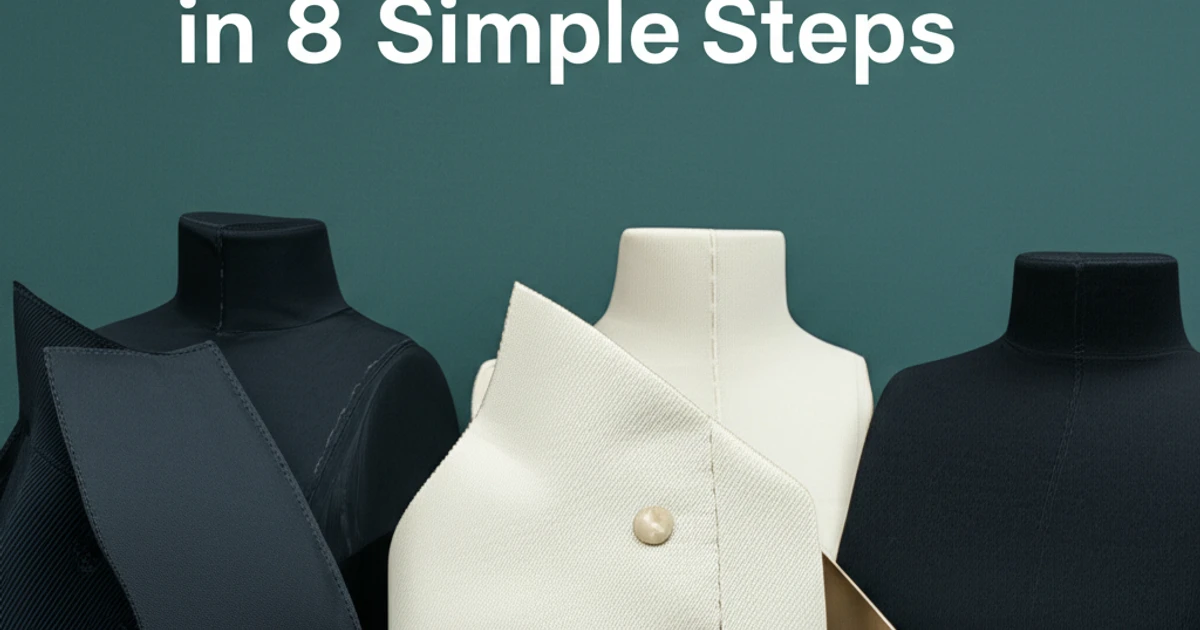Garment Development Development Garment # From Sketch to Stitch: Unraveling the Magic of
Hello, fellow dreamers and doers of the fashion world! Have you ever gazed upon a crafted beautifully garment and wondered about the intricate journey it took from a fleeting idea to a tangible piece of art?Or perhaps, as a design student or a seasoned professional , you're looking for a clear, roadmap actionable to bring your own to visions life.If so you're in the right place .
The journey of is nothing short of magical – a precise blend of artistic vision technical prowess and relentless problem-solving.It's where ideas abstract coalesce into concrete forms where threads weave stories and where passion finds its ultimate expression. It's a journey I've traversed countless times each time learning something new each time marveling at the transformation . Today I'm thrilled to share an 8-step simple garment process that distills complex this journey into an understandable actionable garment making guide. Let’s embark on this creative adventure together!
---
What Ignites Your Next Masterpiece? The Genesis of Design
Before a single stitch is made or a pattern piece is cut, there’s a spark – an idea that demands to be explored . This initial phase is all about deep immersion and imaginative exploration. You're not just drawing pretty pictures; you're building a narrative defining an aesthetic and a identifying purpose. starts It with asking fundamental questions: *Who is this for?What problem does it solve? What emotion does it evoke? *
This is where your mood boards become vibrant collages of inspiration – textures colors,silhouettes historical references and cultural nuances.Conduct thorough market research and trend analysis but always filter it through your unique creative lens. I remember working on a collection inspired by brutalist architecture; the initial concept wasn't just about sharp lines but the about *feeling* of raw strength and minimalist beauty. That clarity, born from extensive research and emotional connection, set the tone for every subsequent decision in the steps. Without this foundational vision you risk creating a product that lacks soul and direction .
---
Do How You Translate Vision into a Tangible Plan? The Art of Technical Design
Once your muse has spoken, it’time s to translate that ethereal vision into a concrete plan. This step is about precision and clarity moving from the abstract to the detailed. You’ll be creating technical sketches,known also as "flats" which are detailed two-dimensional drawings of the garment often depicting front and back views with all seams stitching, and construction details clearly indicated . Think of them as the architectural blueprints for your fashion design .
Alongside your flats you’ll develop comprehensive spec sheets. These documents are gold , everything detailing measurements from and fabric types to placements trim and specific construction methods. This is where also material selection comes into sharp focus. You must consider not only the aesthetic appeal of fabrics but also their drape hand-feel, durability , and suitability for the garment's intended function. Choosing the right fabric can elevate a design from good extraordinary to while a mismatch can derail even the most brilliant concept. This detailed planning is a critical part of a simple garment process that minimizes errors down line the.
---
When Does the Fabric First Speak to Your Vision? The Power of Pattern Making
This is your where two-dimensional plan its begins transformation into three-dimensional form.Pattern making is an art and a science the essential bridge between a flat sketch and a wearable garment. You might to choose draft patterns manually from scratch using measurements and geometric principles,or leverage Computer-Aided Design (CAD) for software speed and precision. draping Alternatively involves manipulating fabric directly on a dress form to create the garment’s silhouette then transferring that shape onto paper to create the pattern pieces .
method Each has its strengths but the goal is the same: to create a set of precise templates that, when cut from fabric and sewn together , will accurately represent your design.The first time I a draped complex bias-cut gown,I felt the fabric almost "speak" to me guiding my hands revealing how it wanted to fall and flow. It was a visceral reminder that while we impose our will on fabric we must also respect its inherent qualities.Mastering this stage is fundamental to any garment making guide,as it directly impacts fit, proportion and overall aesthetic.
---
Why Is Imperfection Your Best Teacher? Crafting the First Sample
Now the moment of truth! With your patterns in hand you'll create the first physical rendition of your garment – often called a toile or muslin . This isn't meant to be perfect; it's a prototype a rough draft in fabric. This stage is about identifying flaws,testing construction methods and assessing the fit on a real body . It's a critical step where you confront the reality of your design .
models Fit come into play here,providing invaluable feedback on comfort movement and aesthetic appeal.Don’t shy away from criticism; embrace it. Every pull every wrinkle every awkward seam is a lesson.Remember that time you thought a sleeve design was genius on paper, only to find it arm restricted movement entirely in the muslin ? That's the learning curve! It’s far better to discover and rectify these issues at this early stage than after investing in expensive fabrics and full production. This iterative approach is what makes a robust simple garment process .
---
How Do You Polish a Diamond? The Iterative Dance of Sample Development
The initial sample is rarely the final one . True refinement comes through iteration.on Based the critiques and observations from your first prototype you'll adjust your patterns, refine your construction techniques, and create subsequent samples . These might include a "proto sample" for initial design and fit a "PP (Pre-Production) sample" that closely mirrors the final product in correct fabric and trims and eventually a "TOP (Top of Production) sample" for final approval.
This process also involves grading – adjusting your base pattern to create different sizes, ensuring consistent fit across the entire size range . Precision is paramount here , as even small discrepancies can lead to significant issues in production. This stage of the steps is where your design truly shines , as each iteration brings it closer to perfection polishing away the rough edges until gleams it. It’s a painstaking but deeply rewarding part of the journey .
---
What Lies Beyond the Seam ? The Intricacies of Production Planning
With your final sample approved and patterns perfected your focus shifts to preparing for manufacturing. This involves the meticulous sourcing of all necessary materials: fabrics linings, interfacings buttons zippers labels and hangtags . Every detail must be accounted for and secured often from multiple suppliers .Building strong relationships reliable with your suppliers is absolutely crucial here; they are an extension of your team.
You'll also develop comprehensive tech packs which are the ultimate communication tools for manufacturers.These detailed documents go beyond just sketches and measurements including a Bill of Materials (BOM), construction details (stitching types seam finishes) packaging instructions and quality control guidelines. This thorough preparation is essential for a smooth and efficient simple garment process once it hits the factory floor . It’s the behind-the-scenes work ensures that what you envision is what gets produced.
---
When Does Your Creation Meet the World?The Journey to Market
Finally,your design moves into the realm of mass production (or small-batch ,depending on your scale!).This stage sees your perfected patterns and tech packs sent to the factory, where skilled hands and specialized machinery bring your vision to life in multiples . Quality assurance becomes paramount, with stringent checks at stages various of production to ensure every garment meets your exact specifications and high standards.
Once manufactured ,the garments are pressed packaged folded , and prepared for shipping . This final of leg the garment making guide involves logistics ,distribution,and ultimately your presenting creation to the world – whether that’s through a fashion show, an e-commerce launch or on store shelves . There's an unparalleled thrill in seeing your design worn by others,becoming part their of story. It’s a testament to the dedication creativity and precision poured into every single step of the journey.
---
Your Creative Awaits Journey: Mastering the Art of
From the flicker of an idea to the final garment gracing a customer the steps are a captivating journey that demands passion, patience and persistence. It’s a process where every detail matters, every decision has an impact and every challenge offers an opportunity to learn and grow.
Whether you're just starting your design education or you’re a seasoned professional honing your craft, understanding and mastering this simple garment process is fundamental to your success. So, take these insights, apply them with your unique creative flair and continue to explore the endless possibilities that await the in magical world of fashion. Happy creating!
--- Metadata


